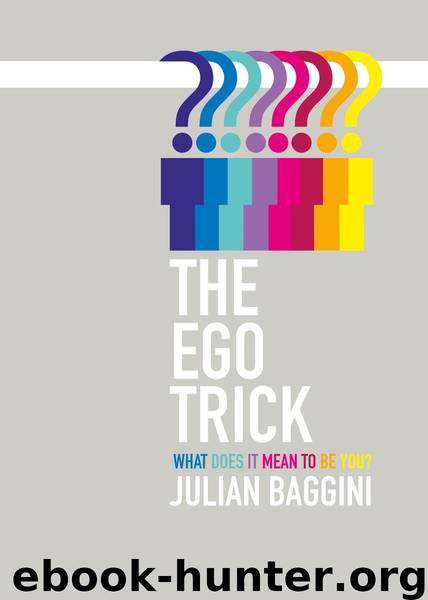The Ego Trick by Baggini Julian

Author:Baggini, Julian [Baggini, Julian]
Language: eng
Format: mobi
ISBN: 9781847083760
Publisher: Granta
Published: 2011-02-02T16:00:00+00:00
3. Identity is not what matters
It is time to confess that in defending the idea that psychological continuity is the basis of our identity over time, I’ve so far been a little disingenuous. The problem comes with the word ‘identity’. The truth is, I’ve been using the term somewhat loosely. Try to tighten it up, however, and it cracks. That’s because, strictly speaking, ‘identity’ is the wrong concept to apply to persons. To explain why, it’s necessary to go into a little bit of logical analysis.
For philosophers, ‘identity’ comes in two main forms: quantitative and qualitative. Two or more things are qualitatively identical when interchanging them would make no difference. For instance, if you have two qualitatively identical bowling balls, it makes no difference which one you pick up when you attempt a strike.
Such qualitatively identical objects, however, are not quantitatively the same: they are not literally the same object. If you put a mark on one of the balls, the other is unaffected. If you smash one, you do not smash the other. If one is in one place, the other can’t be literally in the same place too. When we talk about the identity of objects over time, it is this quantitative identity that we are interested in. We want to know if the very same object has persisted over time, not merely whether two objects at different times are indistinguishable.
Quantitative identity is governed by a strict logic, summed up in what has become known as Leibniz’s law. In essence this says that if x and y are the same object, then what is true of x at any given time is also true of y at that same time. This is why two merely qualitatively identical bowling balls are not the same ball. If it is true of the first that it is on top of the second, then it cannot also be true of the second that it is on top of the first. If, however, I am told that ball x has the same size, weight, colour, composition and location as ball y, at the same time, then I know ball x is ball y. It’s the same logic that enables you to know that if Colonel Mustard was in the same room as the murderer, and that the only people in the room were the murderer and the victim, and that Colonel Mustard is not the victim, then Colonel Mustard is the murderer. The logic is unavoidable.
The problem is that this logically strict notion of sameness only works for reasonably solid, stable objects. In all sorts of real-world cases, notions of ‘sameness’ are vaguer and more context-dependent. Take Hobbes’s famous example of the ship of Theseus.21 This vessel is taken into dry dock for repairs. The masts are broken, so these are replaced. The hull is rotting, so that too is rebuilt with new timber. Then it’s noticed the deck is looking a bit worn, so that too is replaced. And so on, until no parts of the ship are the same as when it came in.
Download
This site does not store any files on its server. We only index and link to content provided by other sites. Please contact the content providers to delete copyright contents if any and email us, we'll remove relevant links or contents immediately.
The remains of the day by Kazuo Ishiguro(8819)
Tools of Titans by Timothy Ferriss(8216)
Giovanni's Room by James Baldwin(7189)
The Black Swan by Nassim Nicholas Taleb(7010)
Inner Engineering: A Yogi's Guide to Joy by Sadhguru(6724)
The Way of Zen by Alan W. Watts(6505)
Asking the Right Questions: A Guide to Critical Thinking by M. Neil Browne & Stuart M. Keeley(5632)
The Power of Now: A Guide to Spiritual Enlightenment by Eckhart Tolle(5604)
The Six Wives Of Henry VIII (WOMEN IN HISTORY) by Fraser Antonia(5394)
Astrophysics for People in a Hurry by Neil DeGrasse Tyson(5130)
Housekeeping by Marilynne Robinson(4342)
12 Rules for Life by Jordan B. Peterson(4249)
Double Down (Diary of a Wimpy Kid Book 11) by Jeff Kinney(4206)
The Ethical Slut by Janet W. Hardy(4172)
Skin in the Game by Nassim Nicholas Taleb(4161)
Ikigai by Héctor García & Francesc Miralles(4125)
The Art of Happiness by The Dalai Lama(4063)
Skin in the Game: Hidden Asymmetries in Daily Life by Nassim Nicholas Taleb(3929)
Walking by Henry David Thoreau(3892)
